Our mission is simple. To create and operate ethical and responsible tours for groups of adventurers across Asia. To aid with plight of Asia's captive elephants and to raise awareness on the damage of plastic to this continent.
Don't wanna be here? Send us removal request.
Text
All About: Chiang Mai
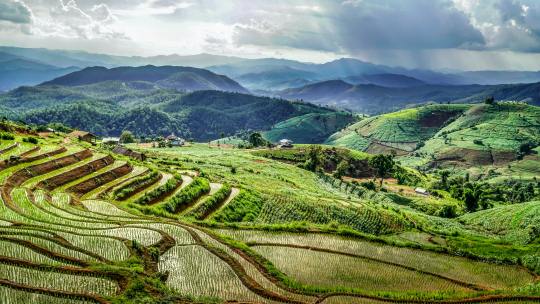
Chiang Mai, located in the North of Thailand, is truly a traveler’s paradise, with rolling mountainous hills, incredible sights and views that you’re sure to never forget, and a relaxing and peaceful atmosphere that will almost immediately make you feel entirely at home upon arrival!
Chiang Mai is 700km North of Bangkok Capital City, set low in a valley on the banks of the Ping River. The city was founded way back in 1296 as the capital city of the ancient Lanna Kingdom, and it still proudly wears its distinctive culture and long history for all to see. However it’s now a place where the past and present seamlessly merge, with modern buildings standing side by side with ancient and exquisite temples.
But it’s not just its stunning countryside, seemingly never-ending fields of green, and magnificent history that make Chiang Mai such an interesting and unforgettable spot! In recent years, the city of Chiang Mai has become a hot-bed of arts and culture, as the traditions of old mix with new traditions brought by the younger generations. This once sleepy city is now teeming with life, and a lively city center shows Chiang Mai at its very best!
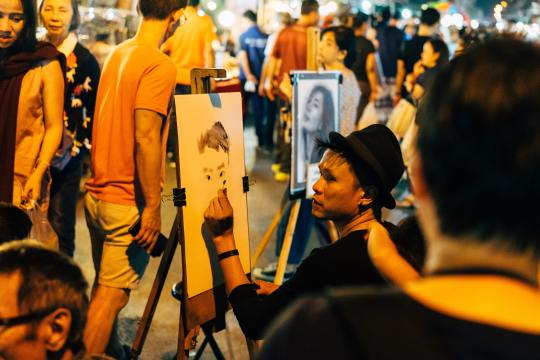
Of course, you cannot visit Chiang Mai without visiting some of the historic locations that made this city so famous in the first place. Ancient temples packed in between modern builds offer a stark contrast from modern-day Chiang Mai and ancient Chiang Mai. Picking just a single temple in Chiang Mai to visit is an almost impossible challenge – the city is not exactly short on them! There are over 300 Wats and temples scattered throughout the city and the surrounding countryside, giving Chiang Mai Province the title home to the most Wats and temples in the whole of Thailand!
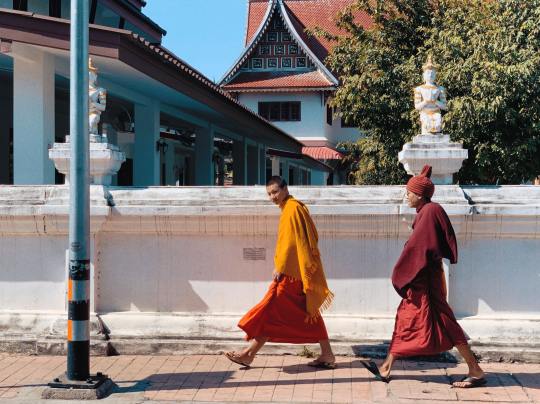
Among these temples is Wat Doi Suthep, the most visited, most acclaimed, and arguably the most famous temple in Chiang Mai. The journey up the winding mountain road to the entrance of this temple is an experience in itself, but it’s the temple situated at the top of the mountain that really takes the cake! The final leg of the journey up to the temple is a 309 step climb to reach the 600-year-old golden chedi at the very top, which towers above the surrounding temple buildings, the monks’ living quarters, and the city of Chiang Mai below! Truly a sight to behold!
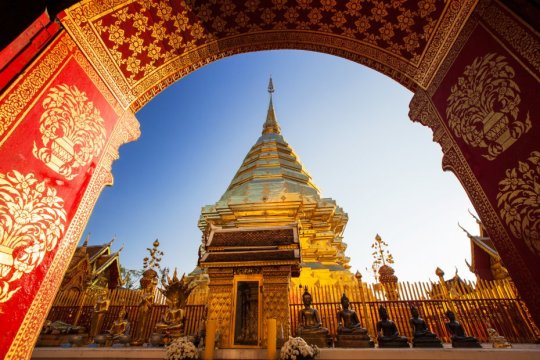
Outside of the city there are even more wondrous locations to visit! Chiang Mai is known to be the home of Thailand’s largest number of elephant sanctuaries and conservation parks, and there’s nothing quite like a day out in the countryside getting to know the gentle giants that are proud to be Thailand’s national animal! Thailand is really striving forward in their elephant conservation attempts, working to educate and teach local mahouts (elephant owners and trainers) how to properly care for these magnificent creates ethically and responsibly, and at the very heart of this effort is Chiang Mai. Many of the elephants that you will meet and interact with in Chiang Mai Province have been saved from the tourism or logging trades, and are now able to live their lives peacefully in their natural habitat! It really is remarkable to witness and experience such an event as this!

And it’s not just the elephants that you’ll find roaming the countryside in Chiang Mai! The countryside of Chiang Mai is also home to many traditional Thai Hill Tribes, and whilst some of these tribes remain private to outside guests, there are some, such as the Karen Tribe, that you are able to visit! This is a really awesome experience, and you’ll be able to learn so much about Tribe life in Thailand, and how it differs from that of the locals that you will meet in the city!
Ultimately, Chiang Mai really is a city of complete wonder, with so much on offer that sometimes it might seem like there are too many choices! However, this paradise province is positively magical, and anyone who visits will surely be left wanting more!
#Chiang Mai#Thailand#Thailand Adventure#Elephant Conservation#Trunk Travel#Northern Thailand#Sustainable Travel
0 notes
Text
A Walking Tour of Siem Reap
One of the biggest perks of Siem Reap is that anywhere that you might want to go, you can get to on foot. Siem Reap is a fairly small city, despite being located within a short drive from Angkor Wat, and its small size means that you can walk around the entire city within a day and see almost all of the best tourist spots! But the real question is, where to start? We’ve got you covered.
Angkor Eye
Starting at the furthest attraction in Siem Reap, the Angkor Eye gives Siem Reap what the London Eye brings to London! Towering over the city, lighting it up magically once the sun sets, the Angkor Eye is an awesome place to start your walking tour of Siem Reap, giving you the opportunity to see the entire city, including Angkor Wat, from above the clouds!
Entrance Fee: $12 USD per person ($6 USD for under 12 years)
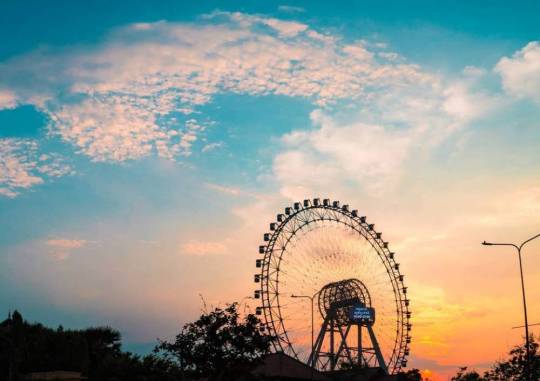
The Royal Gardens
We’re heading down National Road 6 and stopping off at The Royal Gardens next! Situated between Raffles Hotel (a great spot for high tea) and the Siem Reap Royal Residence Building, The Royal Gardens bring a burst of greenery to the city center! With vast grassy areas and a beautiful fountain located in the very center, it’s the perfect spot to stop and relax for a while!
Entrance Fee: Free!
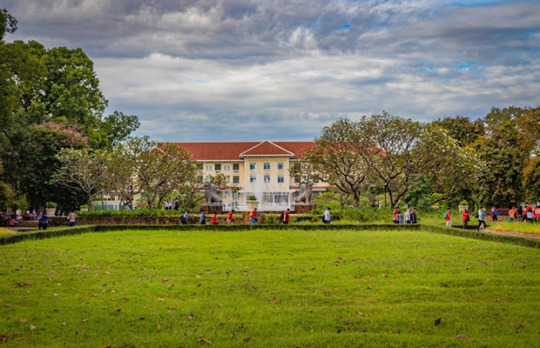
Siem Reap Riverside
Only a mere 2 minute walk from The Royal Gardens, take a stroll down the riverside. Siem Reap’s river is not only a beautiful spot, but is also a way for locals to make a livelihood through fishing in the waters, and during public holidays such as The Water Festival and Pchum Benh, the river becomes a spot of religious significance. Just across the bridge is one of Siem Reap’s most famous markets, the Art Market, which is the perfect place to grab some souvenirs for your family and friends back home!
Entrance Fee: Free!

Kandal Village
We’re swinging back around away from the river towards the city center once more as we head next to Kandal Village! Kandal Village is a portion of Siem Reap city that has truly grown into something wonderful over recent years. From a quiet part of town grew a unique little spot, with independent cafes, shops, restaurants choosing to set up here!
Entrance Fee: Free!
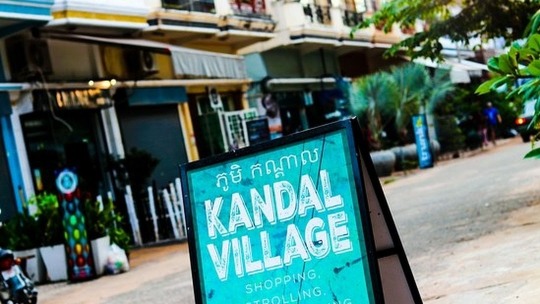
The Old Market
Next up on our walking tour is the Old Market! This Market is situated right in the center of the city, and you can buy almost anything that you could possibly need here, from antiques and souvenirs, to pots and pans! In this incredible market you’ll see that many locals choose to do their shopping here, and you’ll be able to see how traditional markets in Cambodia operate whilst still being able to experience the tourist side of markets!
Entrance Fee: Free!
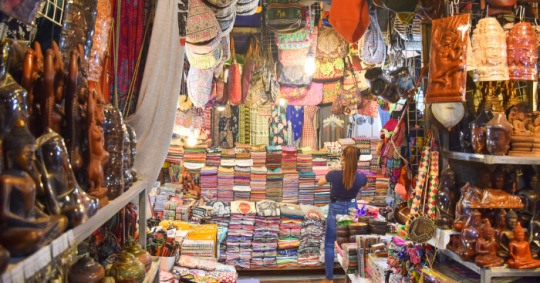
Pub Street
Anyone who travels to Siem Reap has heard of Pub Street! The very beating heart of Siem Reap’s nightlife scene, Pub Street offers visitors numerous lively bars and restaurants to visit, all along one street! From X-Bar and Temple Bar to Beatniks and Banana Leaf, there are so many places on Pub Street to grab a beer at!
Entrance Fee: Free!

Wat Damnak
The final spot on our walking tour takes us away from the hustle and bustle of the city center to the calm across the river. Make your way down the winding street of Little Pub Street, taking in the smaller independent bars, before crossing over the river. Wat Damnak is a religious site, where a beautiful temple stands and you may even get the chance to hear some of the monks in their daily prayers. It truly is a sight to behold!
Entrance Fee: Free!
Have you visited any of these spots before? Are there any spots that you would include in a walking tour of Siem Reap that we missed?
#Cambodia#Siem Reap#Siem Reap Walking Tour#Wat Damnak#Pub Street#Old Market#Kandal Village#Siem Reap Riverside#The Royal Gardens#Angkor Eye#Cambodia Travel#Cambodia Adventure#Trunk Travel
3 notes
·
View notes
Text
Thailand’s Forests: Why Their Destruction is so Devastating for Thailand
Whilst Thailand may seem like a tropical paradise, with miles of luscious and thick jungles and forests, it may come as a surprise to know that Thailand’s jungles used to be even more vast and magnificent.

Between the years of 1960 and 1980 a huge amount of Thailand’s natural forests and jungles were stripped. What was once a largely natural country soon developed and grew, with cities building up across the country, and forest landscapes slowly disappearing. The amount of land in Thailand that was once covered by forest was reduced from 70% in 1950 to only 25% today. Whilst Thailand still has a vast amount of natural forests and jungles, it’s not what it once was.
So what is the reason for this? In 2018 alone, forest products, or products made from the materials found in the forest, account for a whopping 118 billion Thai Baht (3.9 billion USD) in exports from the country. The forests were cut down to meet growing foreign demand for tropical hardwoods and wood furniture, as well as illegal logging and agriculture being two primary culprits in the decline of Thailand’s forests. It has been suggested that only around 16-17% of Thailand’s current forests are healthy, and that if deforestation continues at the rate that it currently is, Thailand will have no more natural forests left within 50 years.
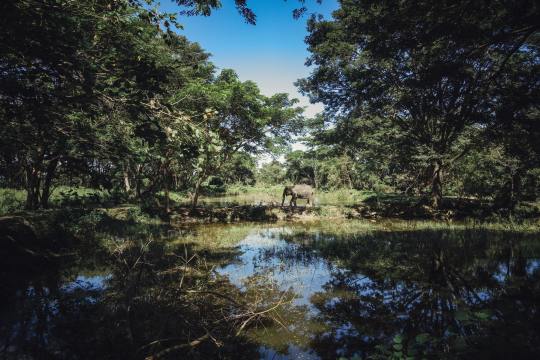
Thailand’s jungles provide a crucial key to Thailand’s ecosystem. Not only does a huge percentage of Thailand’s population use the forests as a means of providing for their families, using the natural materials found their to survive, but most of Thailand’s wildlife population have made home within these jungles.
Rapid deforestation, couple with a rise in demand for exotic animals to be used as pets, has been detrimental to Thailand’s wildlife population. Rhinos and tapirs, which were once commonly found across the country, have all but disappeared, alongside herds of wild elephants, gibbons, and some species of monkeys and birds. Thailand’s once abundant population of freshwater and marine fish have been rapidly depleted by the disruption and destruction of their natural habitats, as well as shrimp, prawns, and sea crabs.
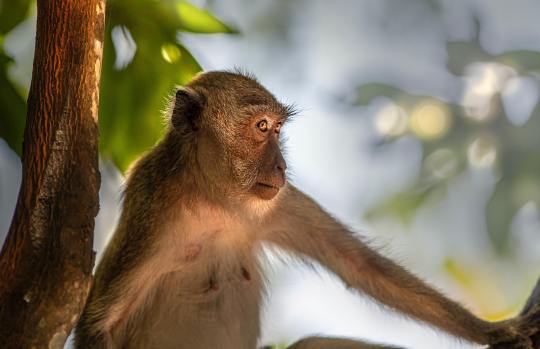
But that’s not to say that efforts are not being made to change this. In 1989 the Thailand government completed a ban on all commercial logging. It is now illegal to sell timber felled in Thailand and all imported timber must be registered with the government before going for sale.
The government has also formulated a series of policies to reforest the open tracts of land. One of the most uncommon techniques is to use aerial reforestation. The idea sounds like from a fantasy movie, but they actually managed to plant 900,000 trees in a day by launching seeds from a military aircraft.
With the reforestation efforts taking place currently, it’s suspected that Thailand’s forest population will grown exponentially over the next decade, hopefully bringing with it an increase in wildlife populations. However, with reforestation already putting many people out of their homes in the countryside, will reforestation usher in a new era of a thriving ecosystem for Thailand, or will it simply bring with it more problems?
#Thailand#ThailandTravel#ThailandFacts#Deforestation#ThailandDeforestation#ThailandWildlife#TrunkTravel
1 note
·
View note
Text
All About Tuol Sleng & The Killing Fields

Cambodia has a history unlike any other country in South East Asia, one that is filled with atrocities, pain, and genocide. However, this is often forgotten about or overlooked, and whilst being so fascinating, so many people have not heard about what took place only 40 years ago. So why is that?
In 1975 the Khmer Rouge swept across the country, declaring their opposition towards Cambodia’s involvement in the Vietnam War, destroying much of what was in their wake. The Khmer Rouge, led by the now infamous Pol Pot, was essentially a communist regime, one that spread nothing but terror and chaos throughout Cambodia for four years, from their rise to power in April 1975 until they were overthrown in January 1979. It is estimated that during this time one third of the Cambodian population was wiped out by their own people, whether it was from exhaustion and malnourishment as they worked in the fields, killed in interrogations, or simply murdered for baring any kind of intelligence beyond what was deemed acceptable, such as wearing glasses, being a teacher or doctor, or speaking a foreign language.
Declaring that the nation would start again at "Year Zero", Pol Pot isolated his people from the rest of the world and set about emptying the cities, abolishing money, private property and religion, and setting up rural collectives.

In Phnom Penh stands two main monuments that proudly showcase the memory of what happened in Cambodia and those who’s lives were lost. Cambodia has not only been able to recover but has grown and developed since those years, but that development came at the price of the peaceful way of life that used to reign in Cambodia. Whilst this may be the case, and the rate of Cambodia’s growth has been exponential since the Khmer Rouge was overthrown by invading Vietnamese troupes, the memory of the atrocities that took place here are still fresh in the minds of many of the people that still live here.
Hundreds of thousands of the educated middle-classes were tortured and executed in special centers. The most notorious of these centers was Tuol Sleng in the capital city of Phnom Penh, often nicknamed S21 Prison, was once a school, but during the Khmer Rouge Regime this school was turned into a prison where ‘enemies’ of the Khmer Rouge were kept, tortured, interrogated and killed. It is estimated that over the four years of the Khmer Rouge Regime as many as 17,000 men, women, and children were kept imprisoned here.
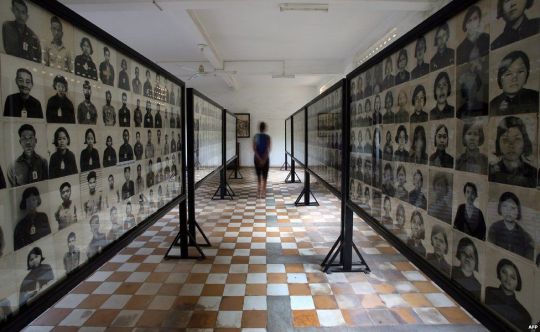
To this day Tuol Sleng still stands, now no longer a prison, but a monument and dedication to those who lost their lives there, including a small amount of foreigners who were simply in the wrong place at the wrong time. It is rumored that during their stay at Tuol Sleng many prisoners were forced into confessing to crimes that they had not committed, including being international spies or selling information to governments outside of Cambodia, pushed to this point through torture and threats. The faces of those that were imprisoned at S21, some only children themselves, still hang on the walls, framed for guests and visitors to see, haunting the halls of the building that once kept them captive.
Due to a policy of guilt-by-association, at times whole families were detained at the center. Very few inmates were released out of the prison between the years of 1975 and 1979. Only 12 former inmates survived the opening of S-21 when Phnom Penh was liberated. Four of them were children. These are often referred to as ‘the lucky ones’.
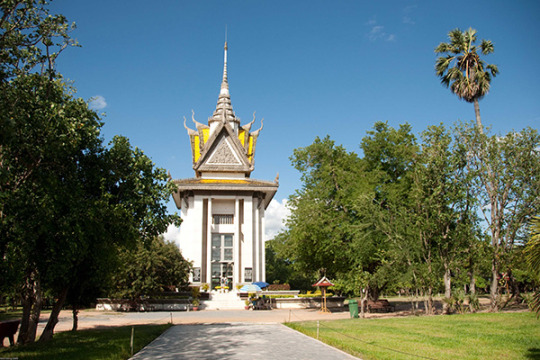
Probably the most heartbreaking monument to the Khmer Rouge Regime stands in the form of the Killing Fields, located just outside of Phnom Penh Capital. Whilst only one of hundreds of Killing Fields across the country, Choeung Ek, which sits on the outskirts of the city, was by far the largest and most terrifying of them all. Today it serves as a memory to those that lost their lives there - and those that survived - and is used as an educational tool to ensure that history never repeats itself again.
Those sent to Choeung Ek made the 17km journey crammed into the back of trucks. Once there, many were blindfolded and, not wanting to waste bullets, soldiers smashed spades into their heads before pushing them into pits containing the dead bodies of thousands. It is thought that about 17,000 men, women, and children were executed at the site.
In 1980, the remains of almost 9,000 people were exhumed from the mass graves that litter the former orchard. Many of these skulls now sit in a memorial stupa that was created in 1988 and forms the centerpiece of the site, serving as a reminder of the bitter past and helping to ensure the lives lost are never forgotten.
Today, it’s hard to imagine the former orchard is a place that harbors such horror. Birdsong rises from the trees, the gentle breeze wafts through manicured fields, flowers bloom, shimmering paddies surround the site and life goes on. Threaded bracelets litter the site, from being hung on plants and posts that surround the locations that once marked mass-graves, to being strung through the trees where children were once killed - a small offering of remembrance and solidarity from visitors and guests who pass through to pay their respects.

It seems almost immoral that such suffering has been almost completely forgotten by the rest of the world. But in Cambodia life goes on, improving day by day, with the unspoken promise that such horrors and atrocities will never happen again in the Kingdom of Wonder.
#Cambodia#CambodiaHistory#CambodianHistory#KhmerRouge#KhmerRougeRegime#TuolSleng#S21Prison#TheKillingFields#TrunkTravel
4 notes
·
View notes
Text
The Golden Mount and Wat Saket: A History
Although not as famous as some of the other more well-known sites in Thailand such as the Grand Palace, the Golden Mount is one spot that’s definitely worth checking out if you are planning a visit to Bangkok. Now seemingly much smaller when compared to the looming skyscrapers of Bangkok’s modern-day city-scape, the Golden Mount, named Phu Khao Tong in native Thai, was once the tallest structure in Bangkok, and if you make it to the top you are rewarded with a 360 degree view of the city below.
The temple itself that sits there, Wat Saket, today was constructed in the early 1900s, but the Golden Mount has been home to many different temples over the years, each one with a different name. During the 1800s the temple was reportedly used as a crematorium, but it has since been renovated, with the first renovation being undertaken by King Rama I, and the second by his grandson Rama III, whose idea it was to create the artificial, man-made hill that the temple now resides on. The final renovations were made by Rama IV, who reinforced the hill, and the temple was made smaller so that the hill could support it better.
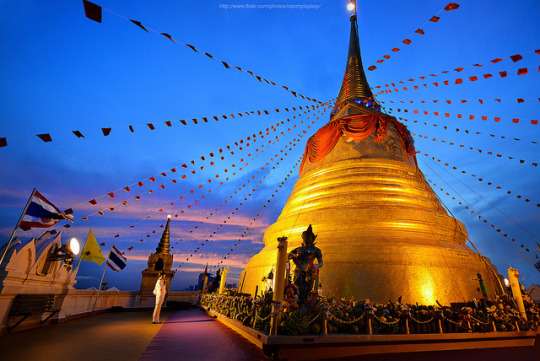
From the base of the mountain there are 344 steps to the terrace at the top, snaking their way around the mountain and up towards the temple, where you can see views of the Grand Palace, Wat Arun, and the Giant Swing!
Along the trek upwards you’ll be surrounded by nature, with temple bells swinging in the breeze, flower gardens along the side of the steps, and mini waterfalls that cascade down the side of the mountain.
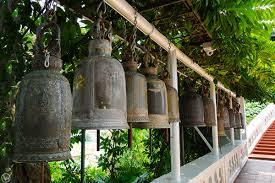
The temple bells, named the Bells of Wat Saket, are a part of one of the Buddhist prayer rituals that take place frequently at Wat Saket. It is these temple bells, alongside the golden temple, or chedi, that sits atop the mountain that earned Wat Saket the nickname ‘The Golden Mount’ by locals, a name which quickly caught on with tourists and travellers.
Today Wat Saket and The Golden Mount are important cultural and religious sites within Bangkok, becoming a pilgrimage site for Buddhist believers, is arguably one of the most popular temples in Thailand, and is 100% worth a visit!
0 notes
Text
Siem Reap Beyond Angkor
Now that tourism is reawakening in Cambodia, the streets of Siem Reap are beginning to look busier, with the familiar footsteps of backpackers hoping to catch a glimpse of Angkor Wat echoing through the once ghostly streets of Cambodia’s tourism capital. With the promise of a more prosperous year for a city that relies so heavily on travellers and tourists, we thought that we would take this moment to highlight some of our favourite spots in Siem Reap that lie beyond the famous Angkor Wat.
1. ICF Wake Park
ICF Wake Park is one of the best family attractions which offers one of the most exciting experiences in Siem Reap! It is not only for water skiing but it also includes water fun for everyone at Adventure Island, a blow-up agility course situated in the waters just off ICF’s man-made beach. Profits from ICF Wake Park are contributed to charity for Children Centers.

2. Footprints Cafe
Footprints Cafe, nearby the river, is a quiet and peaceful spot, perfect for working or relaxing. With delicious coffee, yummy western and Khmer food, a book swap, and a co-working space upstairs, Footprints has everything that you’d want or need from a cafe! We highly recommend the French Toast!
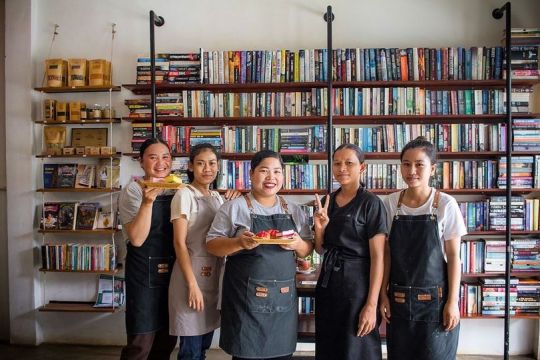
3. Silk Garden
Silk Garden, a locally owned bar hidden in a small alleyway just off Pub Street, is a place that will always have a good atmosphere! With cheap drinks, friendly staff and a whole host of events such as live music and DJs, Silk Garden is definitely a spot that can’t be missed during a trip to Siem Reap!

4. Babel Eco-Shop
Connected to the Babel Guesthouse, the Babel Eco-Shop is filled to the brim with all things sustainable and reusable! From a refill center, to reusable face-masks, plastic free soap, and reusable straws and bottles! There is even an eco-friendly daycare here called Busy Bees which only use plastic free toys!
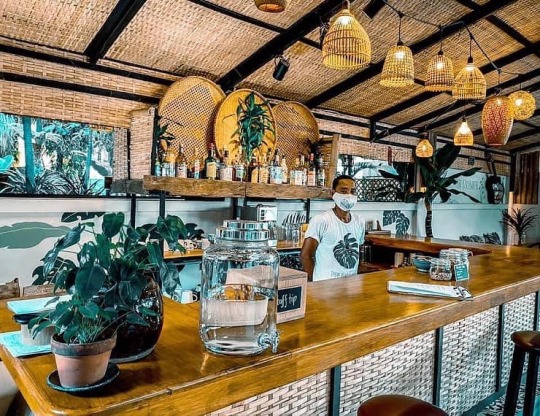
5. The Harbour
The Harbour is completely unique in itself, and is 100% worth the visit! It’s been said that The Harbour is the home of live music in Siem Reap, and we would have to agree with that statement, with a weekly open mic night that draws in large crowds of musicians, and live bands every week! If you’re looking to dance to some live music, The Harbour is the place for you!
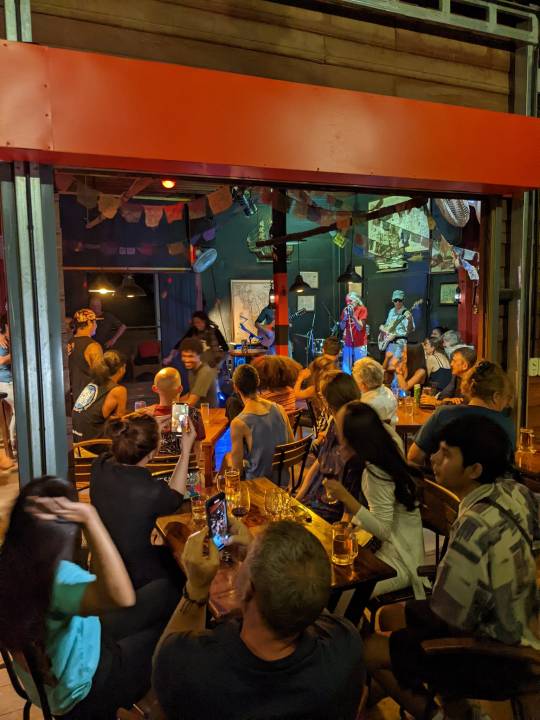
0 notes
Text
Cambodia: Phnom Penh or Siem Reap?
Cambodia, the Kingdom of Wonder as it’s often referred to, is a country filled with rich history, friendly locals, ancient temples, and unforgettable scenery. Cambodia’s top two locations - Phnom Penh and Siem Reap - have been in a battle to take the top spot as Cambodia’s favourite destination for years. But which one really takes the biscuit? Each city has something different and unique to offer, but it’s hard to determine which one wins the fight. But don’t worry, we are here to make the final decision.
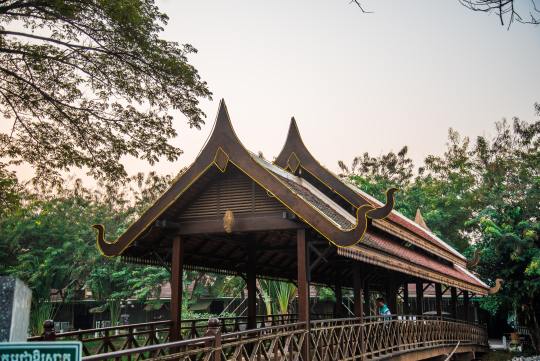
1. Siem Reap is so peaceful.
One of the biggest draws of tourists, expats, and locals alike to Siem Reap is how calm and peaceful it is, despite being such a large and busy city. Filled with green spots, a soothing river perfect for long walks, and jungles teeming with nature surrounding the suburban scenery, Siem Reap is far from the metropolis city that Phnom Penh is renowned for being.
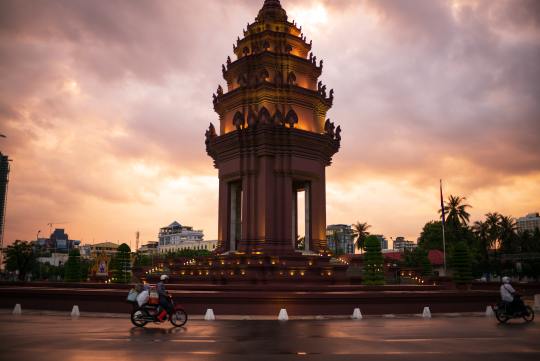
2. Phnom Penh has a bountiful amount of activities and events.
It’s safe to say that there is always something happening in Phnom Penh! From bar events, weekend bazaars, family friendly fun-days, and live music on every corner, you’re sure to never be bored in the capital of Cambodia! Regardless of what day of the week it is, Phnom Penh city always has a full schedule.

3. Siem Reap is home to Angkor Wat.
Angkor Wat is arguably the biggest draw that Cambodia has to offer, attracting thousands of visitors per year. The seventh man-made wonder of the world and the archeological park that surrounds it is situated just outside the city of Siem Reap, earning Siem Reap the nickname the ‘tourist capital of Cambodia’. It’s on the bucket list of every traveller or expat passing through Cambodia, and is a must-see destination for many!

4. Phnom Penh showcases Cambodia’s fascinating history.
The Khmer Rouge ripped through Cambodia between 1975 and 1979, wreaking havoc on the peaceful and quiet country. Whilst those times are long gone, they are still fresh in the memories of many Khmer people living in Cambodia, and Phnom Penh holds an interesting insight into what those times were like. From Tuol Sleng Genocide Museum, a former Khmer Rouge prison turned museum, to the Killing Fields memorial and museum, Phnom Penh shows a side of Cambodia that is often hidden in other cities, showcasing proudly what this incredible country was able to recover and grow from.

5. Siem Reap is filled with quirky local businesses.
We all love a unique little cafe or outlandish small bar, and Siem Reap is filled to the brim with them. Whether you’re on the hunt for a delicious breakfast bagel at Bang Bang Bakery, or seeking out a late-night $1 beer at Silk Garden, Siem Reap has it to offer, and proudly showcases every place that makes this city its home.

6. Phnom Penh always has new faces.
One of the things that we love the most about Phnom Penh is the fact that no matter where you go there are always new people to meet. In comparison to the smaller and quieter Siem Reap, Phnom Penh is bustling with people, and it’s not hard to make new friends! Whether you attend one of the many community events to network, or simply start talking to new people at Backstreet Bar or HClub, new friends are never far away!
Ultimately, the decision of whether Phnom Penh or Siem Reap take the number one title as the best city in Cambodia is entirely dependent on what you as a traveller are looking for. Each city has its pros and cons, as does every city, although it’s safe to say that in this case there are many more ups than there are downs. The best way to make an informed decision? Visit them both!
0 notes
Text
Our Top Hidden Gems In Thailand
We all know the popular spots that Thailand has to offer, from Wat Arun to The Royal Grand Palace. These sights draw in huge crowds of tourists and locals alike every year, and it’s not hard to see why, with their intricate and elegant designs and architecture and fascinating history. However, Thailand’s beauty doesn’t only lie along the tourist trail, with hundreds of hidden locations showcasing the stunning natural and cultural backdrop to the beating heart of Thailand’s tourist trade. These are just a few of our favourites.
1. Erawan Waterfalls
Only around a one-hour drive from Kanchanaburi, Erawan Waterfalls is simply stunning. Named after the highest waterfall in its series, which is often said to resemble a three-headed elephant, the water cascades down from there to another six different waterfalls, each as beautiful and unique as the last. Winding through the forest and jungles, under bridges, and around rock faces, it’s the perfect spot for a day-trip adventure.
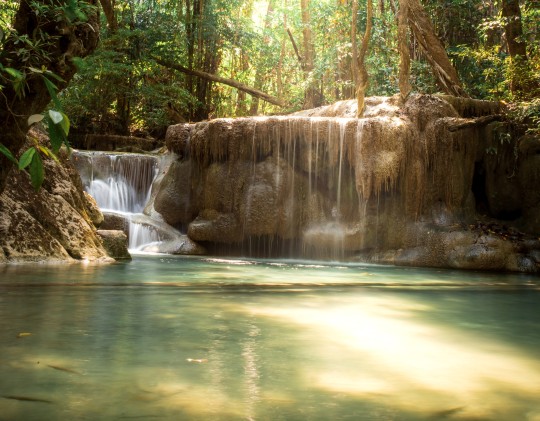
2. Wat Pha Sorn Kaew
Hidden away high-up in the hills of Northern Central Thailand, Wat Pha Sorn Kaew is a Dharma retreat for monks and Buddhist followers. The mountaintop sanctuary, with a preaching hall, pagoda, and surrounding gardens, has a stunning design, and set against the serenity of the mountains is the site’s most striking feature, the ice-white temple, which represents five-Buddhas who have visited Earth.

3. Nai Harn Beach
Nai Harn beach is a superb green bay with powdery and smooth white sand tucked between green hills and a couple of tiny islands in the very south of Phuket. More laid back than west coast tourist spots, Nai Harn has enough restaurants, hotels and shops for a great day and has remained relatively untouched. It truly is a stunning spot, and perfect for a relaxed afternoon under the Thai sun.

4. Koh Panyee Floating Fishing Village
Koh Panyee is a special Muslim village floating on the sea in Phang Nga Bay. It is part of the Ao Phang Nga National Park. The floating island lies in the shadow of a high limestone rock formation in a sheltered bay at sea. Koh Panyee is about half an hour by boat from the Phang Nga Pier in Phang Nga Bay. The floating Muslim village was created about two hundred years ago by 3 seafaring fishing families from Java in Indonesia. Fun fact: All of the local residents that live here are descendants from the original settler that founded the village!
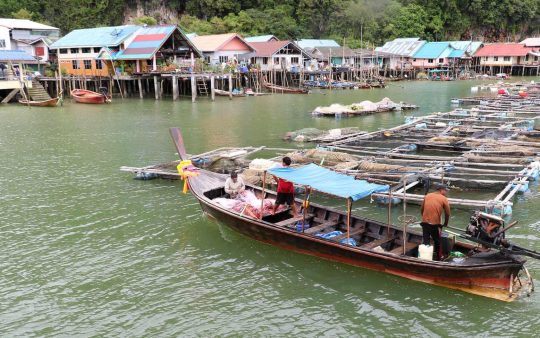
5. Ayutthaya Historical Park
Ayutthaya, an ancient city brimming with character, history, and stunning views, is one spot in Thailand that you simply cannot miss. The ancient ruins scattered throughout the city show glimpses into this city’s fascinating past, where Ayutthaya was once one of the world’s wealthiest cities, laden with beautiful temples and heavenly palaces. You can explore these enigmatic ruins to this day; an exhilarating insight into the rich past of this magical city. It really is something to behold.

#thailand#thailandtravel#thailandbucketlist#ayutthaya#kohpanyee#naiharn#watphasornkaew#erawanwaterfalls#trunktravel
1 note
·
View note